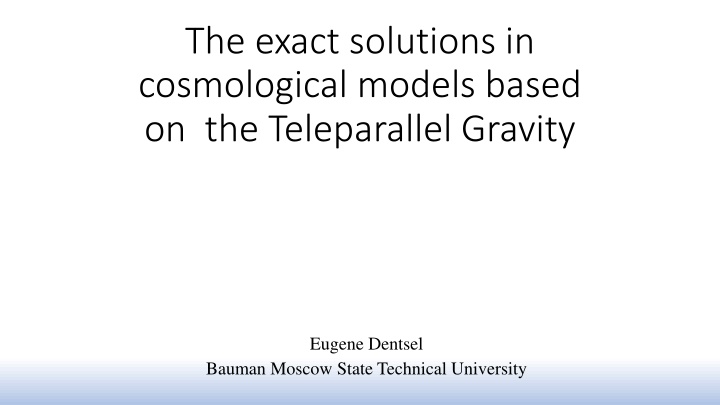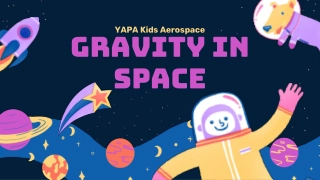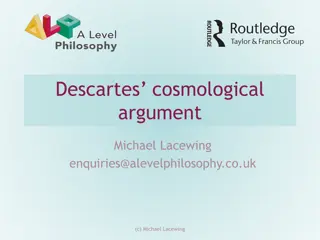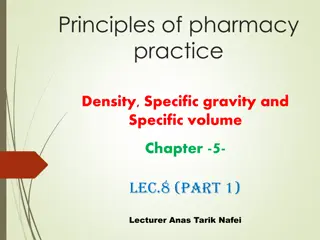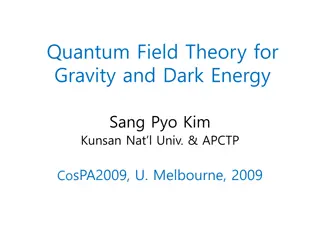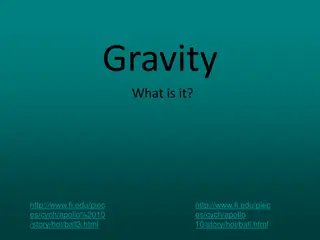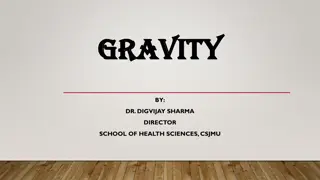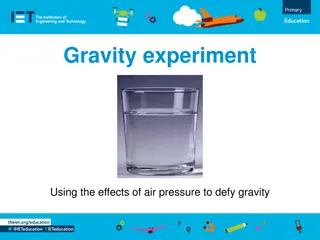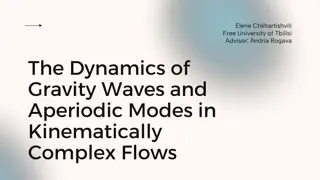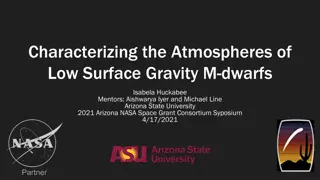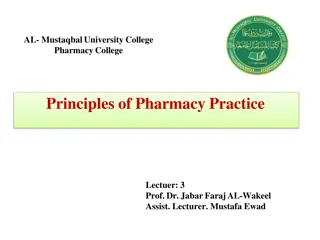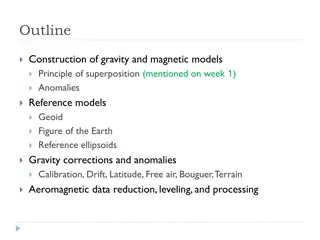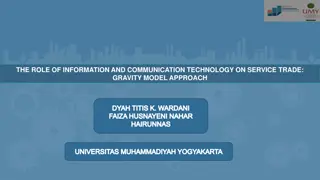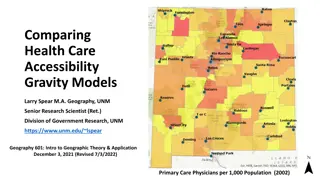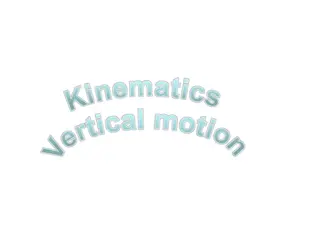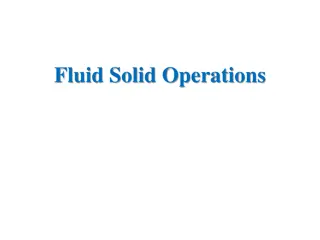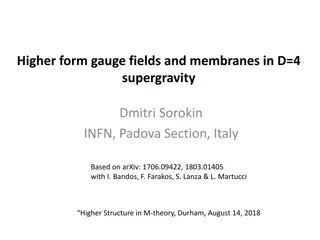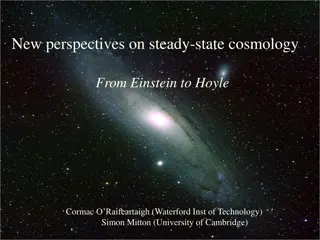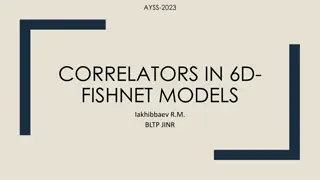Exact Solutions in Cosmological Models Based on Teleparallel Gravity
Precision in cosmological models based on teleparallel gravity is explored, including fundamental theories, modifications, and applications in the context of General Relativity. The construction principles of GR modifications, characteristic tensors, relation between different metric-affine geometries, tetrad formalism, and the concept of Teleparallel Gravity are all examined in detail.
Download Presentation

Please find below an Image/Link to download the presentation.
The content on the website is provided AS IS for your information and personal use only. It may not be sold, licensed, or shared on other websites without obtaining consent from the author.If you encounter any issues during the download, it is possible that the publisher has removed the file from their server.
You are allowed to download the files provided on this website for personal or commercial use, subject to the condition that they are used lawfully. All files are the property of their respective owners.
The content on the website is provided AS IS for your information and personal use only. It may not be sold, licensed, or shared on other websites without obtaining consent from the author.
E N D
Presentation Transcript
The exact solutions in cosmological models based on the Teleparallel Gravity Eugene Dentsel Bauman Moscow State Technical University
Abstract 1. Introduction 2. Fundamental teleparallel gravity. Metric-affine gravity and tetrad formalism. 3. Modified Teleparallel gravity models. Generalised scalar-torsion gravity: osmological background, ansatz method and its application to models of inflation. 4. Conclusion.
General Relativity Theory (GR) precisely describes dynamics and predicts: Gravitational lensing; Perihelion precession of Mercury; Gravitational waves; Black holes. GR in context of solar system Content of the universe (WMAP) Perihelion precession of Mercury
Construction principles of GR modifications The Relativity Principle Modification approaches: Adding dark sector to right-hand side of Einstein equations The Equivalence Principle Modifications of gravitational sector, i.e. left-hand side The Causality Principle The Lorentz Covariance Metric-affine Gravity Fundamental variables metric ??? coefficien?? ?? ?? ?????? ?????????? ?? ?
Characteristic tensors A pictorial view of the breaking of parallelograms induced by torsion Schematic geometrical representation of the curvature, torsion and non- metricity tensors by their effect on the parallel transport of vectors
Relation between different metric-affine geometries Classification of metric-affine geometries
Tetrad formalism Relation between affine and spin connections The tetrad postulate ? 0 Weitzenb ck gauge ??? Weitzenb ck connection and the relation between the Levi Civitta connection Graphical representation of the tetrad, reduced to a 2 dimensional model manifold ?1,?2 = ?1 ???,?2 ???
Teleparallel Gravity (TEGR) An action, considered by Einstein in absolute parallelism theory ?1,?2,?3 = ?????,?1,?2,?3 - invariants of the torsion tensor. For ?1=1 2,?2=1 4 ?3= 1 equations of motion are the same as in GR The Einstein-Hilbert action The Teleparallel action
Modified Teleparallel Gravity Theories Changing geometry (Non- Riemannian geometry) Adding invariants (Higher- order theories) Quantization (Quantum gravity theories) Adding new fields (Tensor- vector-scalar theories) Changing dimension (D- dimensional theories)
?(?) cosmology Methods of adding the dark matter sector. extended -> ? ? - gravitation with Lagrangian as the non-linear function of scalar curvature modified -> Lagrangian as the non-linear function of torsion ?? ??, ?? - pressure, energy density and four velocity of the matter fluid ?? ??- superpotential FRW metric
Generalized scalar-torsion gravity ? = ?4? ? ? ?,? + ? ? ? The general action ? =1 2?????? In standard formulation of teleparallel gravity there is no Lorentz covariance 2 ? ?,? = ??? ? ? ? ? ? ? ? 2 ? ?? = ????(1,?,?,?) corresponds to FRW metric: ??2= ??2+ ?2????????? For TG, ? ? local invariance is restored. For MTG the variation of the action ?? = ?4?????,???? six additional degrees of freedom, due to violation of local Lorentz symmetry ????leads to ???,? 0 a set of six equations for
Cosmological background Background equations ? ?,? ? ? ? 2 ? ?,?= 0 ? ?,? + ? ? ? 2 ? ?,? 4 ??,? 4? ?,?= 0 ?,?? 3? ? ? ? ? ? ? + ?,?= 0 ? ?- Hubble rate ? = 6?2, ? =1 + ?2 ? = ? ? - the canonically-normalized Mukhanov variable 1 ?? 3 2 ? ?2, ? = ? ? ? ????? ?????? ? = 2 1 ?2 ?2 1 4??= 0 - the Mukhanov- Sasaki equation ?? 1 ? ? ? 1 + ? at first order and ??= ? 1??= For ? = 2?? 2?? ?? ? ? ?3 2?2??? ?? The scalar power spectrum of curvature perturbation ??= 2 ?3?? ??
Slow-roll parameters ?,? ??,? ? ?2, ???= Perturbation parameters ? ? ? 2?2?,?, ??,?= ? = , ? = ???+ ??,? 2 ?? ?? ???= ??? = ?? ,??= ? ? = ?? , ??=?? the scalar power spectrum of curvature perturbation at the time of crossing the Hubble radius 8?2??? ?2=? ? ??,? ?? ? ?2 ??? ??? ? ??,??= ? ? = ??+ 2??+ 2?, ??= ??,? 1 + ??= , ? ? ??? ??? ? ln ? ?? 1 = spectrum ? = 8 ? ??,? ?=??= 2? ? + 2??,? = ?? a scale-dependence of the scalar power the tensor-to-scalar ratio for s=4
Exact solutions equations of motion: ? ?,? ? 2 2??,?= 0 ?2= ? ? ? ? ? 6 ? ?+ ?,?= 0 3 Physical constraints: ? < 0.065 ??= 0.9663 0.0041 ??= ??= 2.1 10 9 ? = 60 the number of e-folds ? = ?(?) ? = ? ? ?? Numerical solutions for ? ??
? 2 ?+4 6??? ?+4 6??? ?+4, ?+4 ? ? = ? ? ? = equations of motion ? ?,? ? 2 2??,?= 0 ? 6 ? ?+ ?,?= 0 3
The dependence ? = ?(??) for parameters s =4, ? = 1,?1= 100,?2= 0.1 and ? 0.036,0,17 with constraints on the tensor-to-scalar ratio ?0.002due to the Planck observations.
Conclusion Modified Teleparallel Gravity Theories are reviewed and the generation of primordial fluctuations in generalized teleparallel scalar-torsion gravity theories is studied. Lagrangian density includes an arbitrary function ? ?,? of the torsion scalar and scalar field. Replacing the kinetic term as the function of time ? ? ? = ?(?) allows to contruct a consistent gravity theory with torsion. Numerical solutions shows, that for some models based on GR exact cosmological solutions corresponds to the observational constraints.
